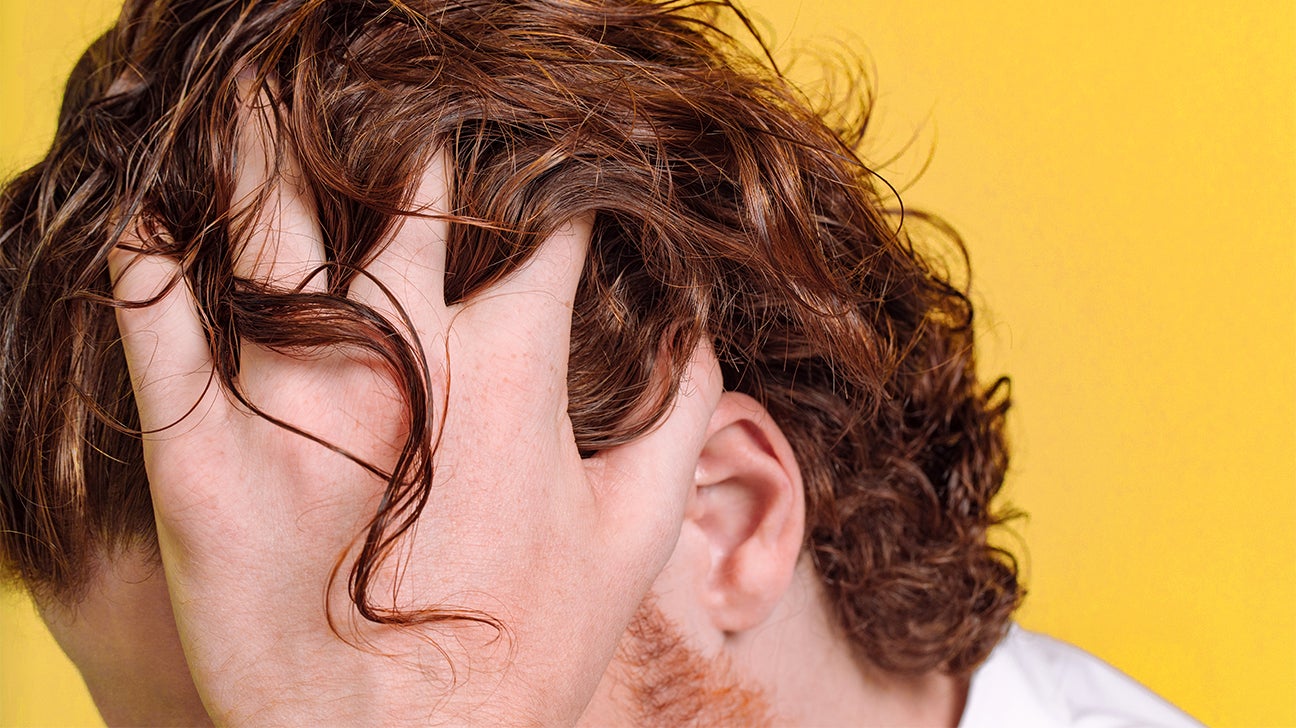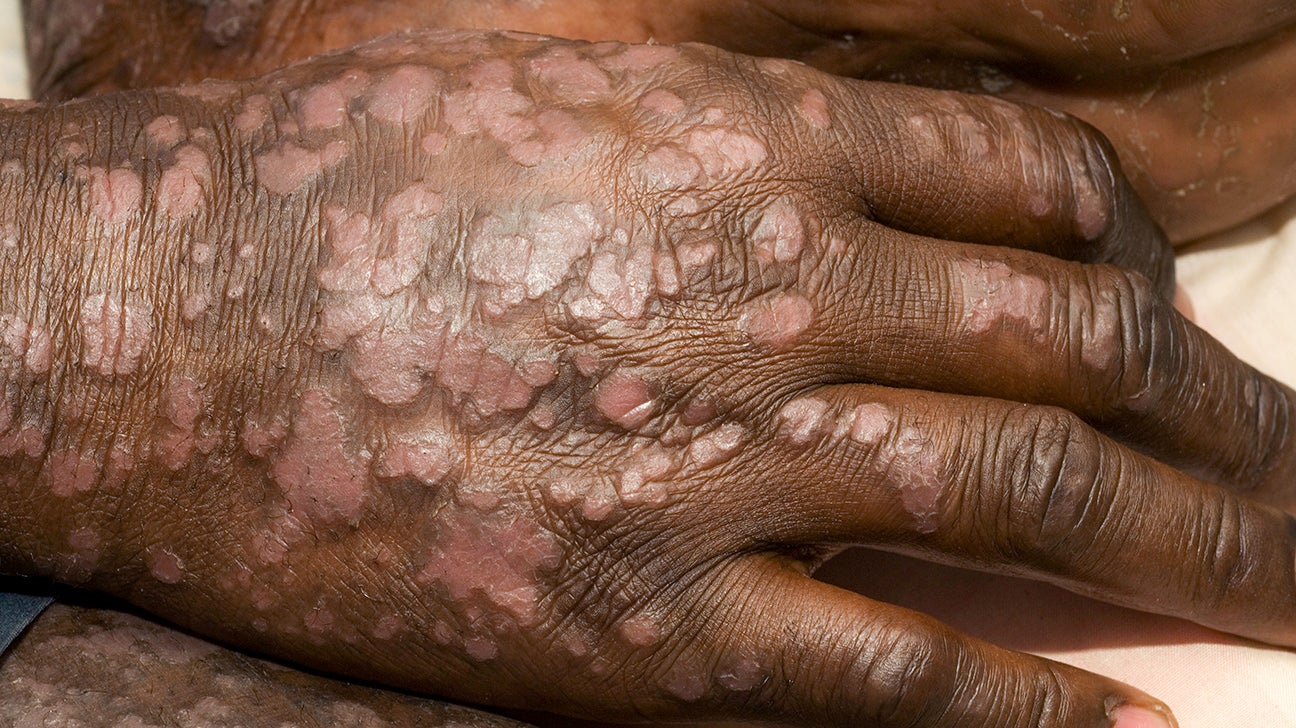What’s flakier than your latest online dating match and more irritating than people who talk at the movies? Why, plaque psoriasis, of course!
Plaque psoriasis fast facts
What is it?
Plaque psoriasis is the most common type of psoriasis, an autoinflammatory skin condition.
Characteristics
The condition causes raised, inflamed, itchy patches (called plaques) covered with a silvery buildup of dead skin cells. They may look red, purplish, or dark brown, depending on your skin tone.
Causes
Experts don’t know the exact cause. Many consider plaque psoriasis an autoimmune disorder. It may run in families or develop as a reaction to stress, injury, infection, or other factors.
Treatment
Topical creams and ointments, including corticosteroids, are common. Alternatively, phototherapy, oral medications, or biologics can help.
Psoriasis is a serious autoimmune disease that affects the skin — and anyone can develop it. Just ask the 125 million people currently living with it worldwide.
Plaque psoriasis is the most common type, affecting 80 to 90 percent of people with psoriasis.
Although it’s easy to mistake the symptoms for eczema, psoriasis is no joke and can even lead to psoriatic arthritis and other health conditions.
Here’s what to know.

What is plaque psoriasis?
Plaque psoriasis is a chronic inflammatory condition that usually shows up as silvery, well-defined scaly patches on the skin. The patches, which are called plaques, can also be super itchy.
They may look red, dark brown, or purple, depending on your skin tone.
Although they can appear almost anywhere on your body, plaques are most likely to occur in the following areas:
(It’s like heads, shoulders, knees, and toes, but much less fun.)
Psoriasis symptoms will come and go. They become worse during flare-ups, but they may completely resolve during remission periods.
There’s currently no cure for psoriasis, but treatments are available to make you more comfortable and reduce flare-ups.
Plaque psoriasis in pictures
If you think you’ve got plaque psoriasis, knowing what to look for can help. Here’s what the plaques can look like. Click through the slideshow to see what plaque psoriasis looks like on different areas.
Other types
Not content with only one type, nature has cunningly designed several types of psoriasis (psoriases? psoriasises? psoriasi?) to ruin your day with itchy vibes. But none of them are contagious.
Plaque psoriasis, or Psoriasis vulgaris, is the most common. Here are the other scratchy and scaly forms of the condition:
- Guttate psoriasis. This form causes small discolored or red spots on the skin, especially on the arms, thighs, and torso.
- Inverse psoriasis. Sweaty groins, butt cracks, and other folded skin areas may become home to this type of psoriasis.
- Pustular psoriasis. This rare form of psoriasis shows up as pus-filled blisters or bumps.
- Erythrodermic psoriasis. This is the least common type. It causes your skin to look burnt and can lead to severe illnesses, including congestive heart failure.
Do I have psoriasis or eczema?
People often confuse eczema and psoriasis because the two conditions have some symptoms in common. Some people may even experience both skin disorders.
Like eczema, psoriasis causes red patches on the skin, but they’re more raised and scaly. In plaque psoriasis, the skin is usually thicker and more inflamed.
Eczema tends to appear in different places, especially bendy areas like your inner elbow and the backs of your knees.
Possible causes
Some experts believe plaque psoriasis is an autoimmune condition, although the exact causes are still unknown.
A mixture of genetics (thanks, Mom and Dad), an overactive immune system, and environmental factors seems to trigger the effects of psoriasis.
If one of your parents has psoriasis, you have a 16 percent chance of developing the condition too. If both parents have it, that chance increases to 50 percent. But in some cases, the onset of psoriasis is a complete mystery. It can pop up in people with no family history at all.
Psoriasis research has shown that the affected skin contains a whole bunch of immune cells that produce inflammatory molecules called cytokines.
If you have psoriasis, inflammation in your body causes keratinocytes (or skin cells) to divide more quickly than expected.
Rapid cell division means immature skin cells are pushed to the skin’s surface, and the skin doesn’t naturally lose the outer cells as it should. These immature skin cells build up on the outermost layer, causing the trademark scaly patches and bumps.
Triggers
Psoriasis is not a one-size-fits-all condition, meaning the triggers can vary from person to person. It’s a good idea to track your symptoms so you can pinpoint your triggers and avoid them.
Some factors that can affect psoriasis are:
- stress
- extreme weather
- hormones
- skin infections or general infections like colds
- medications like antidepressants and blood pressure meds
- family history of psoriasis
In a 2014 study looking at psoriasis triggers in 90 people, more than 70 percent of participants reported stress as a major trigger.
If you love a ciggie and a beer, you may want to reconsider, because both smoking and alcohol also showed up as significant triggers. And about one-third of females in the study found that the hormonal changes of puberty and menopause contributed to flare-ups.
How to treat plaque psoriasis
There’s currently no cure for plaque psoriasis (dang and blast). But there are a ton of treatment options to help soothe those itchy patches and help you get through the day.
Take your time finding the treatment that’s best for you. It may take some trial and error.
Most people with psoriasis can treat the symptoms at home. A quick slather of moisturizer and a short blast in the sun may be enough for some people (here’s hoping). But you may also need medical treatment.
It’s best to talk with a doctor or dermatologist who can help work out the best treatments for you.
Topical treatments
Topical treatments are products you apply to your skin. They’re often the first choice to help manage plaque psoriasis.
Using these treatments can help reduce inflammation and itching, prevent your skin from drying and cracking, and slow down the growth of new skin cells.
Corticosteroid creams, gels, or lotions can reduce inflammation and itching. Use them sparingly, though — applying them over a long period can thin out and discolor your skin.
Your doctor may start you off with a potent topical corticosteroid to ease the immediate symptoms and then prescribe topical treatments containing synthetic forms of vitamins D and A.
If your plaque psoriasis affects parts of your skin where the sun doesn’t shine (yes, like your butt crack — we know your brain went there), it may be best to avoid corticosteroid products.
Salicylic acid is another option. This acid works by encouraging the outer layer of skin to shed, meaning you’ll be extra flaky for a little bit, but then less so (hopefully).
Emollients are moisturizers that soothe and promote healing in sore, inflamed skin. Choose fragrance-free products and apply emollients after washing your hands and showering.
Phototherapy
Phototherapy is ultraviolet (UV) light therapy. You can use both natural and artificial light to help with psoriasis.
Phototherapy aims to reduce inflammation and slow down enthusiastic skin cell production. It can be a good option for folks who aren’t having much luck with other treatments.
But, like any other treatment, it has drawbacks. Repeated and long-term use of phototherapy might increase your risk of skin cancer.
Treatments may use UVA or UVB light. During phototherapy, you expose your skin regularly to an artificial light source for a set amount of time.
Some people with plaque psoriasis use excimer laser therapy to apply phototherapy treatment (but try this only if your dermatologist thinks it’s a good idea — they know best).
Alternatively, your doc may recommend PUVA, a treatment combining a medication called psoralen with UVA light exposure. Psoralen makes your skin more receptive to the effects of the phototherapy.
(And no, tanning beds are not a suitable replacement for phototherapy. Don’t go there.)
Oral treatments
Who doesn’t love oral treatments? They work well for people with moderate-to-severe psoriasis or psoriatic arthritis, because they work throughout the body.
Systemic oral treatments include:
- acitretin
- cyclosporine
- methotrexate
- apremilast (Otezla)
These therapies reduce inflammation, and some change or reduce immune system reactions. These effects, in turn, calm psoriasis symptoms.
Biologics
Biologics are a class of drugs that affect the immune system and aim to target the underlying cause of psoriasis (which is your immune system being an asshole).
Dermatologists usually reserve these drugs for people with moderate-to-severe plaque psoriasis. Biologics have an excellent safety record, but you might need blood tests to see if these treatments are right for you — not everyone reacts well.
Some common biologics are:
- adalimumab (Humira)
- certolizumab (Cimzia)
- etanercept (Enbrel)
- ustekinumab (Stelara)
- guselkumab (Tremfya)
- risankizumab-rzaa (Skyrizi)
- ixekizumab (Taltz)
- secukinumab (Cosentyx)
Takeaway
Plaque psoriasis is the most common type of psoriasis.
It has a ton of possible triggers. Maybe it runs in your family, you’ve been super stressed, or your hormones are out of whack. Maybe it’s all three.
Although this condition can feel frustrating AF and has no cure, there are plenty of ways to tell your angry skin to cool its heels, including topical creams and ointments, light therapy, oral medications, and biologics.
But your best bet is to have a chat with your doctor or dermatologist before trying anything. They’ll help you manage the condition and suggest the most suitable treatments.




0 Commentaires